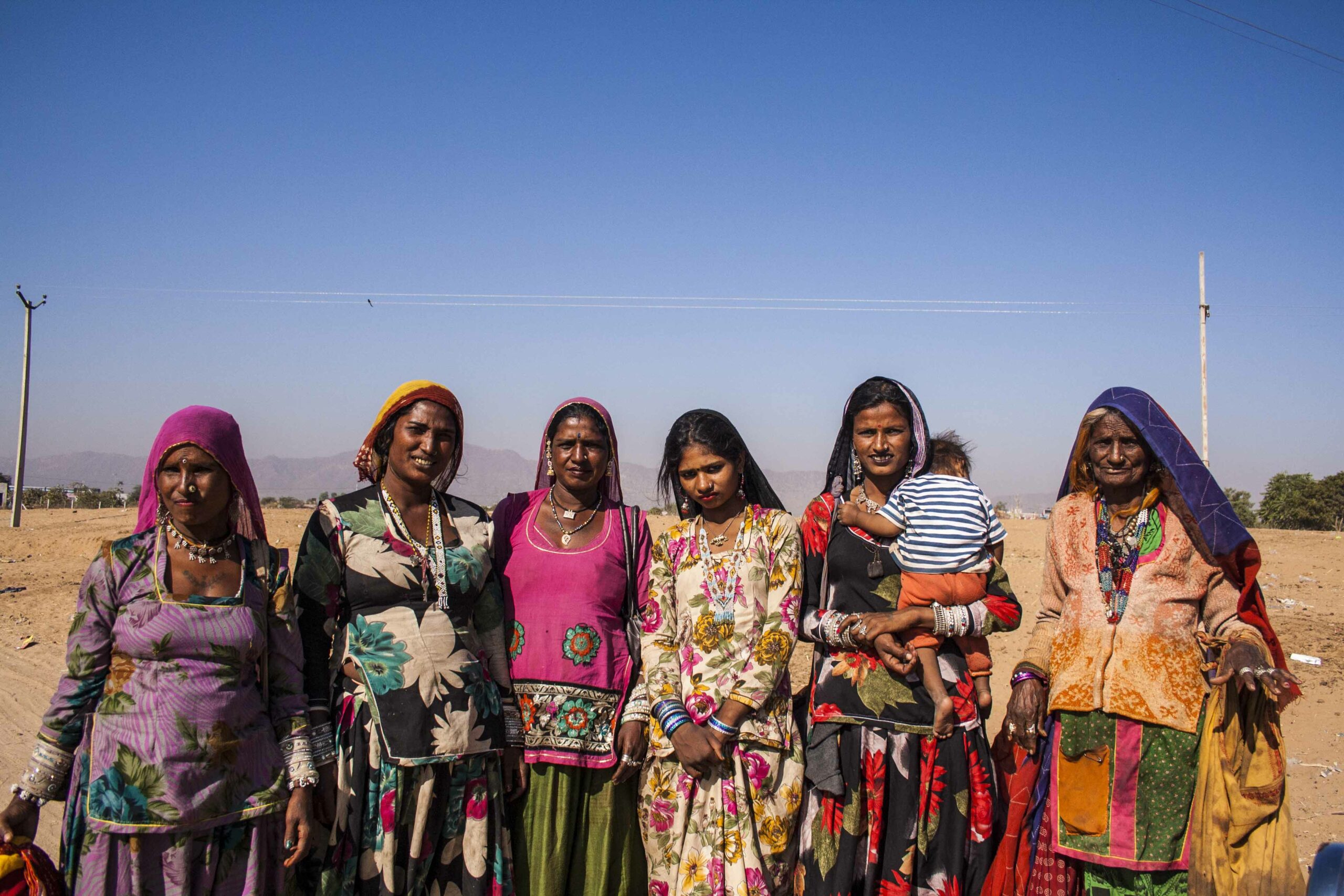‘Kalbelia’ dance showcased in National Folk and Tribal Art Festival
What do we know about the Kalbelia tribes?
- The Kalbelia are a snake-taming tribe from Rajasthan, India’s Thar Desert. Men and women both participate in the dance, which is an essential component of their culture.
- The Kalbelias are devotees of Sage Kanifnath, who after consuming a bowl of poison was granted mastery over poisonous snakes and animals.
- The Daliwal and Mewara are the two primary groups that make up the community.
- In the past, the Kalbelia people had a history of often travelling from one location to another, and their traditional livelihood was hunting snakes and trading snake venom.
- They raise a variety of animals, such as dogs, hens, horses, donkeys, pigs, and goats, which has an impact on their dance moves and attire, mimicking the serpents they encounter.
- Numerous names, including Sapera, Jogira, Gattiwala, and Poogiwara, are given to them.
- The Pali district has the most Kalbelias, but there are also sizeable populations in the neighbouring districts of Ajmer, Chittorgarh, and Udaipur.
- The scheduled tribes are home to the nomadic Kalbelias.
- In the past, Kalbelias camped outside of their communities in improvised settlements known as deras.
- They acquired a distinctive grasp of the local flora and wildlife over many generations, as well as information on herbal cures for many illnesses, which became a secondary source of revenue.
- Due to the intermittent nature of performance chances and the seasonal nature of tourism, some community members must work in fields or herd cattle to make a living.
- The holy day of Naga Panchami is observed by Kalbelias, who are Cultural Hindus who practice snake worship, especially of the Nga and Manasa deities.
- In contrast to the majority of Hindus, they follow various practices, such as wearing an apadravya and burying their dead rather than cremating them.
- According to Kalbelian marriage traditions, the groom must give the bride’s father a price and the groom’s father must also contribute to the wedding.
What was their main occupation and livelihood?
- While their women sang, danced, and begged for alms in villages, Kalbelia males used to carry cobras in cane baskets. They support the non-killing of snakes and respect the cobra.
- A Kalbelia would be called if a snake tried to enter a house so that it could be caught and removed without being killed.
- The Wildlife Act of 1972 obliged Kalbelias to give up their long-standing occupation of handling snakes.
- After giving up snake handling, they turned to the performing arts as their main source of revenue. Their performances were well received both inside and outside of India.
What makes the ‘Kalbelia’ dance different from the other dance forms in our country?
The Kalbelia dance is an essential component of Kalbelia culture and is done as a celebration. It serves as a symbol of the Kalbelia people’s identity, expressing their distinctive customs and inventive adjustment to shifting socioeconomic realities.
How is the dance form performed what are the attires worn?
- Women perform the Kalbelia dance the majority of the time. The dance’s main motif is the movement of a serpent, and the women are dressed in flowing black skirts that convey this idea.
- Additionally, the women dress in a lehenga (lower body cloth), angrakhi (upper body cloth), and odhani (headcloth), all of which have intricate embroidery.
- The female dancers are decked with customary jewellery and wear clothing that has been lavishly embroidered with tiny mirrors and silver threads, which enhances the dance’s aesthetic appeal.
- The dancers’ traditional tattoos are another distinctive feature of their appearance during performances.
- The Kalbelias execute particular dances on significant occasions like Holi, giving their cultural customs even more diversity and significance.
- These dances enhance the joyous atmosphere of the Hindu festival of colours, Holi.
- The music’s rhythm picks up speed as the dance performance goes along, as do the dance moves, which get more and more animated.
- This makes Kalbelia dance a visually and aurally compelling type of art, resulting in an intriguing and captivating experience for the spectator.
What is the role of music in their dance forms?
- Male dancers accompany the music with a variety of traditional instruments.
- Pungi (a woodwind instrument historically used for snake charm), duffle, been, khanjari (a percussion instrument), morchang, khuralio, and dholak are some of these instruments.
- These instruments’ rhythm sets the tempo for the dancers’ performance.
- The dance performance includes kalbelia songs, which are based on mythological and folktale tales.
- The Kalbelias are known for improvising songs and writing lyrics on the spot while performing, exhibiting their artistic talent and originality.
- The oral heritage of Kalbelia’s dance, songs, and cultural activities is passed down through the centuries.
- Since there are no official texts or instruction manuals for studying Kalbelia dance, it is a dynamic and culturally diverse art form.
Is the Kalbelia dance listed on the UNESCO list?
- In 2010, UNESCO added the Kalbelia folk songs and dances of Rajasthan to its list of Intangible Cultural Heritage.
- This honour is intended to protect and preserve this traditional art form for upcoming generations and to raise public awareness of its cultural significance.





